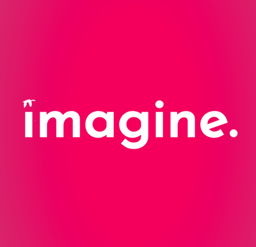How to write a winning cover letter
Stand out from the crowd
A winning cover letter kind of looks like this.
“Nobody reads a cover letter — it’s so 1995!”
Is it true that nobody reads cover letters? False. But most recruiters skip the bad ones and only read the good ones.
But one thing is true. Today, a good cover letter is not a full-page letter. Instead, the usual content of a cover letter is now pushed into the online forms, or into the email that you send to submit your application.
So, what is a cover letter? In essence, it’s a short text answering two questions
- Who are you?
- Why do you apply for this job?
It’s a great, easy opportunity to increase your chance of being hired. A good cover letter achieves these 4 things:
- Establishes a relationship between you and the recruiter. To do so, make an effort to find out the name of your primary contact person. If the job description lists a name, go ahead and use it. If not, go on LinkedIn, and search by company name. For large companies > 100 employees, try to find the head of recruiting or head of HR. For smaller companies, do the same and also add the CTO.
- Helps you to avoid any bias. Signal in your letter that you are thinking ahead and helping the HR department work through your case. This is something recruiters greatly value because it makes their job easier. Mention that you are Blue Card-eligible (if you are). Say that you are prepared to manage the visa process for them (if you are).
- Makes you stand out. Ideally, recruiters can visually scan your cover letter for the keywords they care about. See our advice on keywords here.
- Shows your desire to work there. To do so, read the job description and identify the one thing that is special or unique. Maybe it’s how they talk about their work culture. Or learning opportunities. Or sports. Or specifics of their product. Find this unique aspect and describe how that makes you want to apply.
Enough theory. Now practice
Here’s a good cover letter text, and a bad one. We start with the bad one. Read it and ask yourself why it’s so ineffective.
To whom it may concern, I hereby submit my application. I am an excellent Java programmer who is highly diligent, ready to start working. For more details see my resume. I am looking forward to hearing from you. Kind regards, [CANDIDATE FIRST NAME]
Why is it bad? The salutation is generic. The email does not say what position the application is for. The text is formulaic (“I hereby submit”). It’s too direct (“I am excellent”). It’s also too sloppy to end with your first name only at first contact. To be on the safe side in slightly more formal Germany, switch to first names only once your correspondent has switched.
Let’s take a look at a good example. This is actually a winning cover letter email that an Imagine Fellow has sent to a company. He scored an interview.
Dear recruiting team at [Company name], dear Mr./Ms. [real name of HR manager and/or CTO] I hope this finds you well. I hereby apply for the position of “FULL-STACK DEVELOPER (JAVA/REACT)” at [Company name]. I am a full stack developer with [x] years of full time work experience. I mainly work in Java with the spring framework as well as REACT. I also have some applied UX experience mainly from developing android apps and supporting front end teams. I now seek a new challenge being closely embedded in an agile product development team like yours, working on exciting novel B2C applications like the ones [COMPANY] is building. I am looking forward to hearing from you. Kind regards, [FULL NAME]
Why is it good? This cover letter corrects all mistakes of the bad one. In addition, it is well structured.
- The first paragraph establishes a personal connection (“I hope this finds you well”) and helps the recruiter understand which position you are applying for.
- The second paragraph answers who you are and drops a few relevant keywords for that position (Java, Spring, React, UX).
- The third paragraph is a bit short but at least does a basic job of identifying the unique aspects of the job description, which mentioned “agile teams” and “B2C” as company specifics in the job description.
PRO TIP 1: It’s a good idea to visit an HR manager’s LinkedIn page to get a better feel for the person behind the name. But, importantly, do not mass-connect with HR managers on LinkedIn. These people are professionals and know their peers. Nothing says “I don’t care about you and your company” as clearly as you being connected with half of their peers.
PRO TIP 2: Use this good example as a basis to craft your own cover letter texts/emails. Do not use it as a template though. The entire idea of a good cover letter is that it’s not generic but specific to the job you are applying for!
PRO TIP 3: You can write cover letter emails in a semi-standardized manner, carefully adjusting parts of your text to each company while keeping the overall structure in place. This saves you time and headaches. But, importantly, always customize, never fully standardize. Recruiters can easily tell.
PRO TIP 4: Keep it simple, short, and sweet. Do not write texts longer than 230 words. If it’s too long nobody will read it.
That’s it. We hope you enjoyed the read. Now it’s time for action. As always, we are rooting for you. Keep us posted.
— Your friends at Imagine
© 2018-2022 Imagine Foundation e.V. Made with 🤍 in Berlin.

